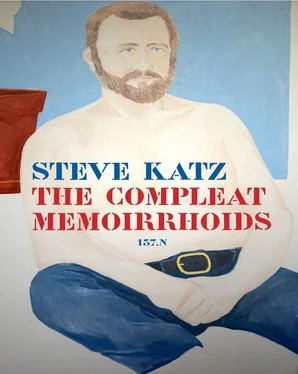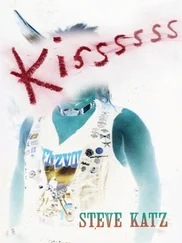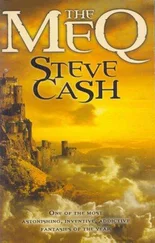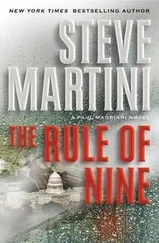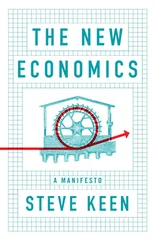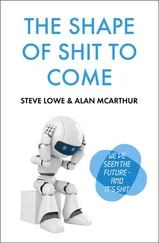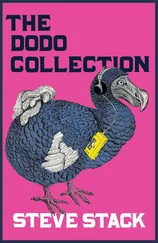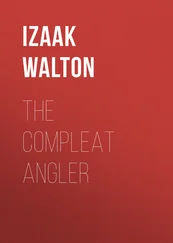The wide, vaulted atrium of the hotel is vast enough to volume all the dreams of the writers, mixed media artists, and computer artists attending the conference. As I do almost everywhere these days I feel superannuated in this crowd of young writers, even middle-aged writers. If they don’t know my name people call me “sir,” which “honorific” feels like the award of a service medal tamped directly into the flesh.
We meet in a small conference room, and speak to a sparse audience. Dimitri Anastasopolous reads from a carefully prepared paper on issues of surrealism, suitable for an academic conference. Yuriy Tarnawsky, brilliant author of Meningitis and Three Blondes and Death , among other works, reads a strong piece of rare intelligence about surrealism. My ears are blind to this kind of academic performance. At an avant-garde festival I expect something looser, less conferency, more artist and less academic. I want everyone to unspeak, to unlearn. Fall in. Get wet.
I wrote the piece I read for a different panel, one focussing on the materials of writing, and the physicality of the writer. I prefer to miss the dream target. In the piece I claim that I write in bed, under the covers, a flashlight on the premises with the rest of my kit. That is how as a kid I used to enjoy reading when I was supposed to go to sleep. Writing inside a tent of blankets grabs at some fertile mischief. Bed is, I might explain to the conference cops, where you have most of your dreams, and that is my justification for reading the piece at this dream panel. I do fall in line and give some practical advice for recording dreams, which is this: keep a pencil and a small notebook hinged at the top by the bedside. Have a rubber band set below the last line you wrote. When you wake from a dream don’t open your eyes because you will spill the images. Start to write below the rubber band, moving it down as you go. This way you will lose less of the dream imagery to the illusion of wakefulness. When you finally open your eyes you will be giddy with creativity and accomplishment.
On our way into a dream we have access to a wide spread of images, a seemingly chaotic continuum of form, movement, situations, and as we present ourselves before this apparent chaos, perhaps according to some revelatory predispositions, we construct the narratives we call dreams. The mind always hungers for a story. Our flexibility in this environment is virtually unlimited, and we can be as playful or chilling as our inclinations or obsessions dictate. This navigable spread comes from a great variety of sources — personal experience, media experience, suggestions by friends, someone’s knee, the catalog of archetypes, a flash of teeth, a night of stars, a hefty sneeze, a day at Meat Cove. Every little node of cognition, every trace of subconscious provides the material of dreams. The excitement is in constructing the dream narrative, though listening to anyone awake trying to tell a dream is almost always an exercise in tedium.
When I write, particularly a first draft, I work as if in this process of dreaming. I try to create work with the same freedom I understand in the creation of the dream. Writing for me is a lucid dream state, even in its most mimetic “realistic” moments. The excitement is never in the mimesis itself but in scaling and flexing the detail to get beyond the words. The act of description is not to put an object in its place, but to move through its tangibility to get to the element beyond, invisible and ineluctable. I do this as in a dream. For my writing this allows the orphic WHAT!?! of art. Thus I understand in using the dream process even “realistic” narrative fiction refreshes. And so my understanding of the dream has worked for me as a tool for creating narratives of ambition, sorrow, pain, joy.
I do remember certain dreams, and perhaps that fact alone negates my carelessly thought-out theory. I’ve had a recurring dream of being in a placid environment, among friends, a stroll through a garden, an easy drive in the country. Suddenly I am isolated on a beach, backed against the sea-wall and there is a gathering roar and I am caught in the curl of an enormous wave that threatens to smash me. I expect this has a number of possible symbolic interpretations, and suggests that I might wake up in a wet bed. But that hasn’t happened. What has happened is that since I wrote and published the story “Nowadays & Hereafter” I haven’t had that dream. Tsunami is a major element of that story. Out there somewhere maybe the wave still gathers. I wait for the dream to reiterate, though I have a feeling it won’t. Maybe I’ve erased it by that writing, and perhaps this is the clearest example of the connection of my dreams to my fiction.
The University of Notre Dame is its own municipality, with a postal address separate from the surrounding South Bend, Indiana, once home of the long defunct Studebaker. The golden dome of the University gleams in the midst of this poor city as Notre Dame, Indiana 46556, much as the Vatican operates as an independent state, encircled by Rome. During the time I taught within that protective shell Father Theodore Hesburgh reigned liberally, and opened the university to a breadth of intellectual diversity. One of the forums of that diversity was the Sophomore Literary Festival, a week long celebration of writers and writing. At that festival during one year of my employment they invited both Tennessee Williams and William Burroughs.
The party on this night is for Tennessee Williams after his presentation, and Burroughs is here about to present on the next day. I am lucky to witness a conversation between them, strange and resonant because it unfolds in mid-America in the middle of northern Indiana in the middle of South Bend in the midst of The University of Notre Dame.
I sit comfortably in a stuffed chair between the two icons. The couch and easy chairs are arranged around a coffee table. It could feel like we are drawn together for warmth on a dark winter evening in the holy backwater of Notre Dame, Indiana. The great playwright slouches in his overstuffed leather chair, and watches the tall, trim, well-groomed Jim Grauerholz, Burroughs’s business manager and amanuensis, fuss around the master of the beat shadow world.
“William Burroughs (He pronounces it Burras), you’re a lucky man. You have a beautiful boyfriend.”
“He’s not my boyfriend. He works for me,” Burroughs replies curtly, not looking at Williams.
Williams lowers his eyes from Grauerholz and smiles his most coy Blanche Dubois smile, dim as a faltering incandescent. “Life is sad, William Burroughs. Don’t you think life is sad?”
Burroughs, in rumpled grey suit, white shirt with wrinkled collar, black tie, does a slow mechanical scan across to Williams in his easy chair, holds him a moment in the grey steel of his gaze, reverses, says nothing.
“I know the sadness in the world. My boyfriend, he’s such a sweet young man, but he just is set to kill himself all the time with those drugs he uses. He wants to kill himself. Why does he want to kill himself, William Burroughs?”
Burroughs looks straight ahead as if through the gang of demons that always seems to precede him, his voice dry as cracking glass. “He doesn’t have to take those drugs. He can stop if he wants to. Tell him you want him to stop.”
Williams sighs again and looks down at his left wrist as if he regrets the wilting there of an imaginary gardenia. This a confrontation between the parodic queen of southern decadence and the warrior king of haywire puritanism. “It’s so sad,” Williams whispers as if to himself, then he looks at Burroughs. “But he wants to take those drugs. That’s what’s so sad. I ask him to stop but he insists. He wants to die, William Burroughs. Who can prevent it?”
Читать дальше
